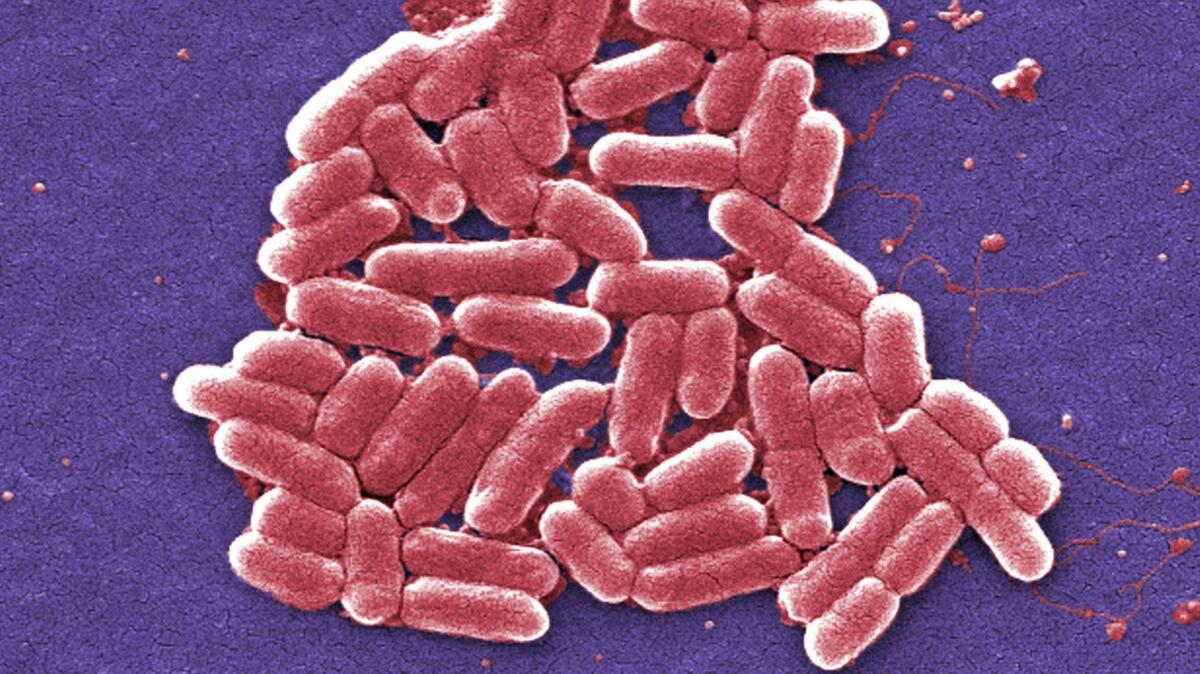L.A. County patient was infected with drug-resistant E. coli

Scientists were alarmed last year when they found that a woman in Pennsylvania had been infected with bacteria that was resistant to colistin, an antibiotic that is considered the last line of defense against particularly nasty illnesses.
It was a scary reminder that bacteria are increasingly able to survive antibiotics, making some infections extremely difficult or even impossible to treat.
Now California is on a list of six states where patients have been infected with bacteria that contains a gene known as mcr-1, which makes it resistant to colistin. Los Angeles County health officials announced Tuesday that a resident who died last year had been infected with E. coli bacteria carrying the mcr-1 gene.
âThis just poses another threat that could make infections more difficult to treat,â said Dr. Benjamin Schwartz, acting director of the acute communicable disease program at the Los Angeles County Department of Public Health.
Schwartz said the patient didnât die from the E. coli infection but from a different medical condition. He said public health officials believe the man had been infected with E. coli in Asia, where heâd traveled shortly before falling ill, and that it hadnât spread locally. The mcr-1 gene was first discovered in China in November 2015.
The rise of drug-resistant bacteria has led to strains of tuberculosis and gonorrhea that arenât susceptible to antibiotics. Colistin is often the only antibiotic to which many of these highly resistant bacteria succumb.
But in May last year, researchers tested a urine sample of a Pennsylvania woman with a urinary tract infection and found E. coli with the mcr-1 gene that made it resistant to colistin. It was the first time the gene had ever been detected in the United States.
Public health officials were especially concerned because mcr-1 is on a plasmid, a piece of DNA that can be transferred from one organism to another. They worry that the gene could jump onto other bacteria that are already highly resistant to antibiotics, like carbapenem-resistant enterobacteriaceae, or CRE. An outbreak of CRE that began in late 2014 at UCLAâs Ronald Reagan Medical Center killed three people.
When the first colistin-resistant superbug was reported last year, Dr. Tom Frieden, then-director of the Centers for Disease Control and Prevention, said that âit is the end of the road for antibiotics unless we act urgently.â
Experts say that the increase in drug-resistant bacteria is worsened by physicians over-prescribing antibiotics and that hospitals and doctors need to focus on only using the medicines when necessary.
To read the article in Spanish, click here
Twitter: @skarlamangla
ALSO
A âslow catastropheâ unfolds as the golden age of antibiotics comes to an end
Obamacare repeal would also affect your employer health insurance
More to Read
Sign up for Essential California
The most important California stories and recommendations in your inbox every morning.
You may occasionally receive promotional content from the Los Angeles Times.











